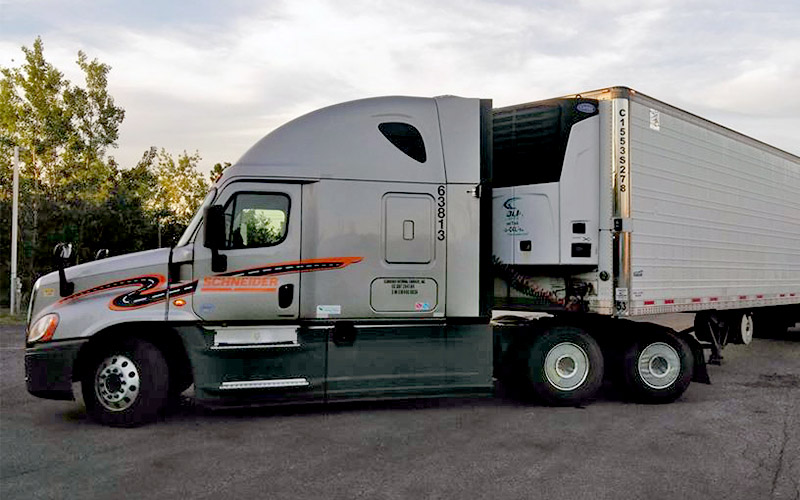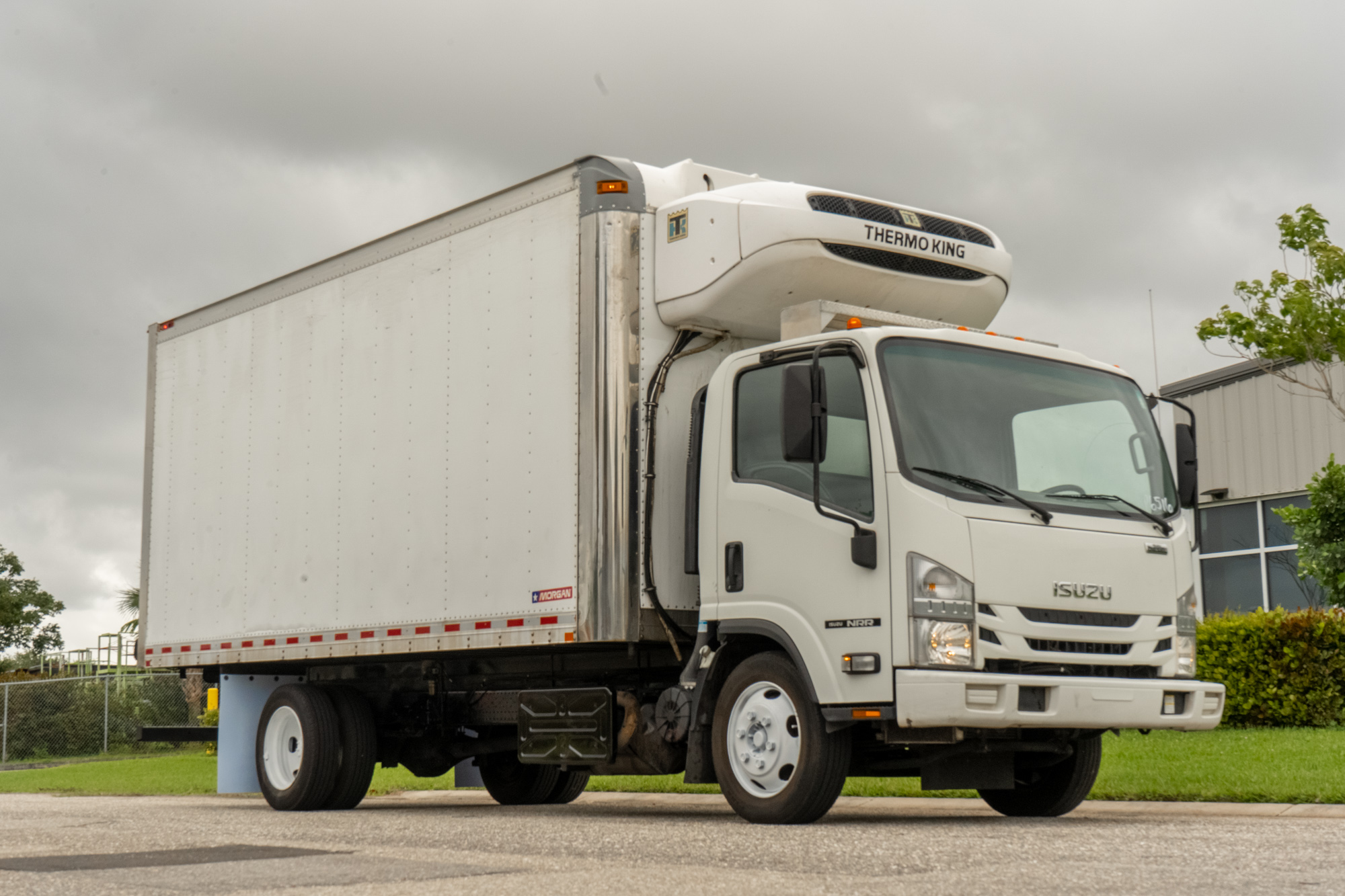Reefer Trucks Thermo King: Trusted for Temperature-Sensitive Item
Reefer Trucks Thermo King: Trusted for Temperature-Sensitive Item
Blog Article
Leading Technologies in Transportation Refrigeration: Enhancing Effectiveness and Safety
The landscape of transportation refrigeration is going through significant transformation, driven by innovations aimed at boosting both performance and safety. As these developments continue to advance, it is necessary to discover their ramifications on operational techniques and regulative compliance, prompting a better examination of just how they improve the future of transportation refrigeration.
Smart Temperature Checking Equipments
In the world of transportation refrigeration, clever temperature level surveillance systems have emerged as a vital development for making sure the honesty of temperature-sensitive items. These advanced systems leverage Web of Things (IoT) modern technology to give real-time information on temperature fluctuations, allowing drivers to keep optimal problems throughout the supply chain. By continuously tracking the temperature of refrigerated containers and lorries, business can swiftly recognize discrepancies that may jeopardize product top quality.

Additionally, wise tracking systems often incorporate automated alerts and alerts, enabling stakeholders to respond without delay to any prospective problems. This positive strategy not just lessens the danger of putridity yet also boosts conformity with regulative criteria controling food security and pharmaceutical transport.
The combination of information analytics within these systems likewise facilitates predictive maintenance, assisting drivers to foresee possible tools failures prior to they occur. This capacity minimizes downtime and optimizes functional performance, inevitably bring about set you back savings.
Eco-Friendly Refrigerants
Smart temperature tracking systems play a crucial role in keeping product quality, yet the performance of transport refrigeration additionally depends upon the selection of cooling agents used. As environmental concerns increase, the change in the direction of environment-friendly cooling agents has actually come to be imperative. Standard cooling agents, such as hydrofluorocarbons (HFCs), are infamous for their high International Warming Prospective (GWP), contributing considerably to environment modification. In contrast, arising options like hydrocarbon-based cooling agents and hydrofluoroolefins (HFOs) present lower GWP options, supplying both performance and sustainability.
These green cooling agents not just decrease ecological impact however likewise straighten with international policies aimed at terminating unsafe compounds. Their adoption can lead to enhanced power effectiveness, ultimately lowering operating expense for transportation refrigeration systems. Moreover, making use of all-natural refrigerants, such as ammonia and carbon dioxide, has obtained grip as a result of their excellent thermodynamic residential properties and reduced ecological footprint.
Spending in environment-friendly cooling agents is not simply a regulative conformity procedure; it stands for a strategic decision that boosts brand name track record and fosters consumer commitment. refrigerated transportation thermo king. By prioritizing sustainable techniques, companies can contribute to a greener future while making sure the integrity of transported items
Advanced Insulation Materials
Utilizing sophisticated insulation materials is essential for enhancing transport refrigeration systems, as they dramatically improve power effectiveness and keep constant temperature level control. Standard insulation methods commonly fall brief in stopping thermal transfer, causing boosted power consumption and fluctuating temperature levels within refrigerated areas.
Arising materials such as vacuum cleaner insulated panels (VIPs) and aerogels provide premium thermal resistance, permitting thinner accounts without compromising performance. VIPs, for example, utilize a vacuum cleaner layer to decrease conductive and convective warmth transfer, making them excellent for space-constrained applications. Aerogels, known for their light-weight and permeable structure, supply remarkable insulation while substantially reducing overall system weight.
Additionally, including phase change materials (PCMs) right into insulation systems can better stabilize temperatures during transit. These products soak up and launch thermal energy, efficiently buffering against exterior temperature level variations.
The integration of these sophisticated insulation products not just reduces the operational expenses related to energy usage yet also prolongs the life span of temperature-sensitive goods. As the transport refrigeration industry remains to progress, the fostering of innovative insulation modern technologies will be critical in improving both effectiveness and security in cooled transport.
Automated Path Optimization
The effectiveness of transportation refrigeration systems is greatly enhanced through automated route optimization, which leverages real-time information and innovative formulas to figure out additional info the most efficient paths for delivery. By analyzing various factors such as website traffic patterns, weather conditions, and distribution home windows, these systems can significantly decrease travel time and fuel consumption.
Automated path optimization reduces human error and subjective decision-making, which can bring about inadequacies. This modern technology allows fleet managers to allot sources better, making certain that chilled products keep their needed temperature throughout the trip. By enhancing routes, firms can also boost client complete satisfaction via timely distributions.
Additionally, automated systems can adapt to unanticipated conditions, such as roadway closures or sudden website traffic spikes, allowing for vibrant rerouting. This flexibility not just protects the stability of temperature-sensitive items but additionally adds to general operational effectiveness.
Applying automated path optimization can result in considerable cost savings while reducing the carbon footprint linked with transportation. As organizations increasingly focus on sustainability, this development stands out as a critical element in contemporary transportation refrigeration, lining up operational objectives with environmental duty. Ultimately, automated course optimization represents a considerable advancement in the pursuit for effectiveness and safety and security in transport refrigeration.

Real-Time Data Analytics
Automated route optimization considerably gain from the integration of real-time data analytics, which gives essential understandings into the performance of transportation refrigeration systems. By making use of real-time information, transportation operators can monitor temperature level fluctuations and tools performance, ensuring that subject to spoiling goods are kept within required parameters throughout transportation. This positive approach not just boosts the top quality of the carried items however additionally alleviates the risk of wasting and loss.

In enhancement to improving effectiveness, real-time analytics improves safety by ensuring compliance with governing criteria for temperature level control. This not only protects public wellness yet likewise fortifies a company's reputation - refrigerated transportation thermo king. As the transport refrigeration industry advances, the combination of real-time data analytics becomes a foundation for driving development, sustainability, and operational quality
Conclusion
In verdict, the improvements in directory transport refrigeration dramatically boost both efficiency and security within the market. Jointly, these technologies represent a vital development in transportation refrigeration, making certain conformity with regulatory standards and promoting a greener future.
The landscape of transport refrigeration is read review undergoing considerable improvement, driven by technologies intended at boosting both efficiency and security.Smart temperature tracking systems play a crucial duty in keeping item top quality, yet the performance of transportation refrigeration additionally pivots on the selection of cooling agents used. Their fostering can lead to boosted power efficiency, ultimately reducing operating costs for transportation refrigeration systems. Ultimately, automated path optimization represents a significant development in the quest for efficiency and safety in transportation refrigeration.
In final thought, the developments in transport refrigeration considerably improve both effectiveness and security within the market.
Report this page